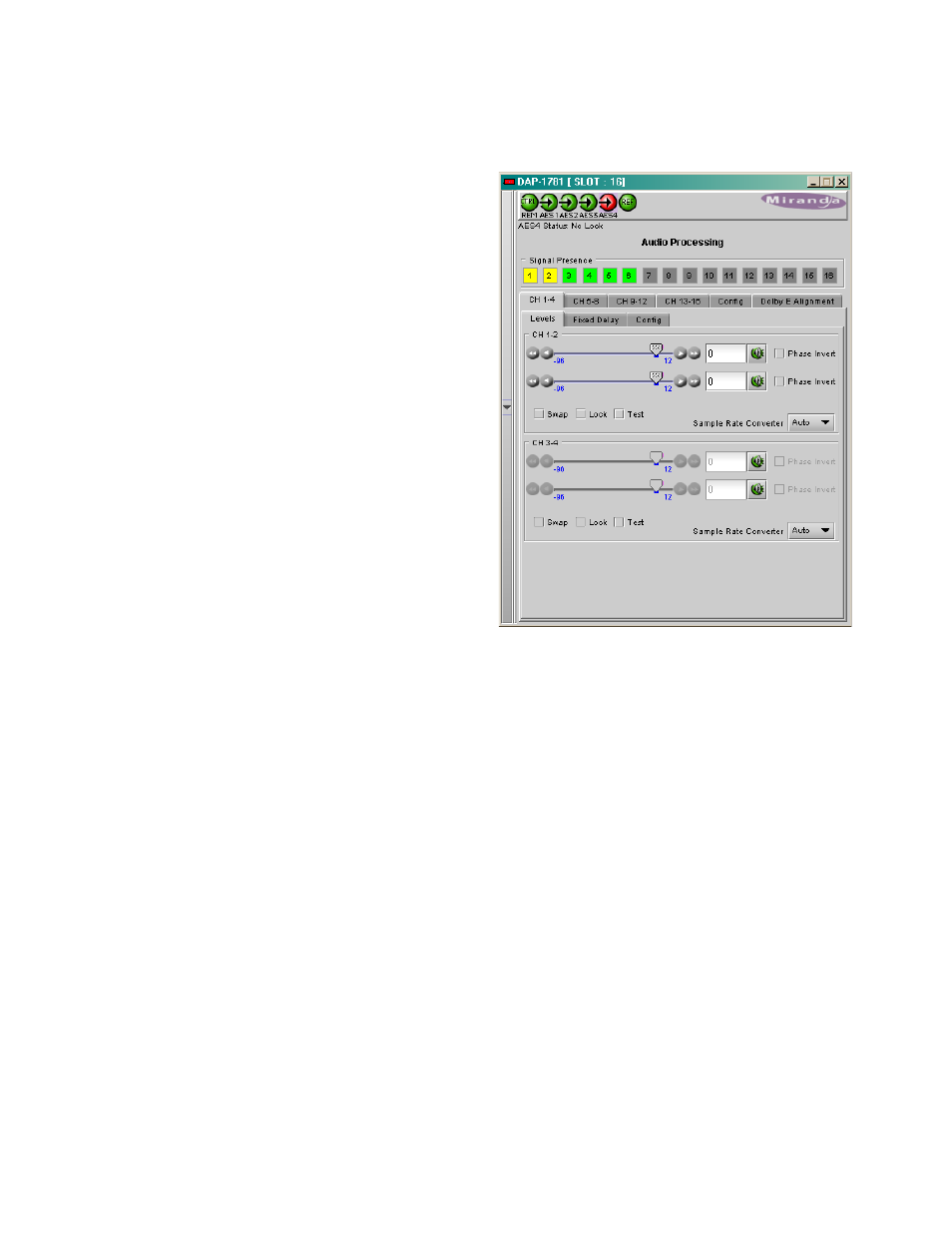1 audio processing, 1 audio processing - ch 1-4 to ch 13-16 tabs, 1 levels sub-tab – Grass Valley DAP-1781 User Manual
Page 26: Audio processing, Audio processing - ch 1-4 to ch 13-16 tabs

GUIDE TO INSTALLATION AND OPERATION
26 | DAP-1781
4.1 Audio Processing
4.1.1 Audio Processing - CH 1-4 to CH 13-16 tabs
The channels 1 to 8 represent the AES1 to AES4
digital inputs. When a video card is present, eight
extracted audio channels are available as channel 9
to channel 16. See Audio Processing/Config tab
for the input selection from the video card.
Signal Presence: At the top of this window are 16
indicators; they monitor audio presence and are
related to the No Signal Detect parameters defined
in the Config sub-tab (see details below). An
indicator is green when a signal is present and
yellow when a silence is detected according to the
Threshold and Delay settings.
It turns gray for a No Lock AES Input status.
• Note: these indicators appear in green for
non-PCM content.
CH 1-4 to CH 13-16 sub-tabs: each of these tabs
controls the input processing (Levels, Fixed Delays
and Configuration for the absence signal detection)
for two pairs of channels; each channel is provided
with a set of controls.
4.1.1.1
Levels sub-tab
Each channel has the following controls: a Level
slider (from -96 to 12 dB), an input box where the
desired level may be input directly, a Mute icon
button and a Phase Invert checkbox.
At the bottom are three checkboxes:
• Swap – allows channel swapping inside a pair, available only on channels 1 to 8. .
• Lock – locks both channel sliders together for levels and delay, so that moving one slider moves the
other one as well.
• Test – replaces the input signal with a stereo test tone.
Note: the Level sliders, the Phase Invert and the Swap checkboxes are inactive on non-PCM signals.
• Sample Rate converter – a manual selection of the input sample rate converter is available through
a drop down menu. Its primary use will be to turn off the sample rate converter to handle Non-PCM
data with an incorrect channel status (PCM/non-PCM bit).